gentle yoga: 10 restorative poses for renewal
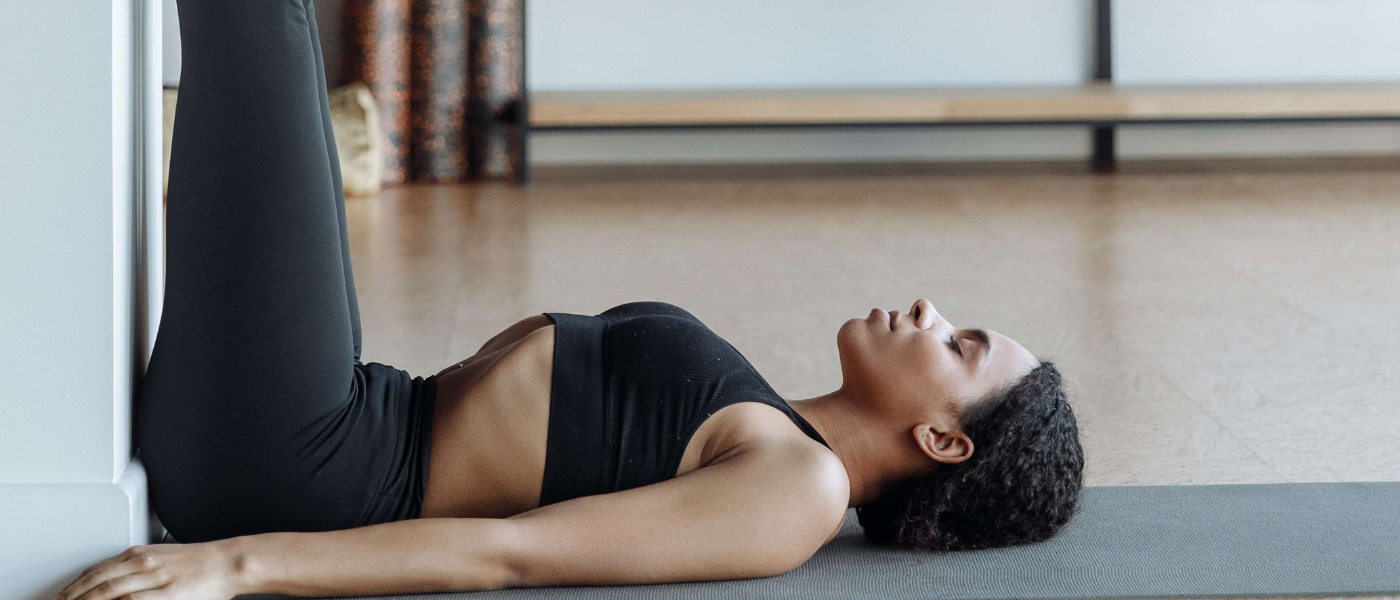
Gentle yoga is a form of Hatha yoga that emphasizes slow, gentle movements, deep breathing, and relaxation. Others describe it as a more accessible and less physically demanding style, suitable for people of all ages and fitness levels.
Key Takeaways
- Gentle Yoga is a form of Hatha Yoga that emphasizes slow, gentle movements, deep breathing, and relaxation.
- It’s an accessible style of yoga and less physically demanding than most others, making it suitable for people of all ages and fitness levels.
- Gentle Yoga includes several styles, such as Yin, Restorative, and slow-paced Hatha Yoga.
- Gentle Yoga aims to relax and release the body and mind by encouraging the nervous system to move from fight or flight mode to rest and digest.
What is Gentle Yoga?
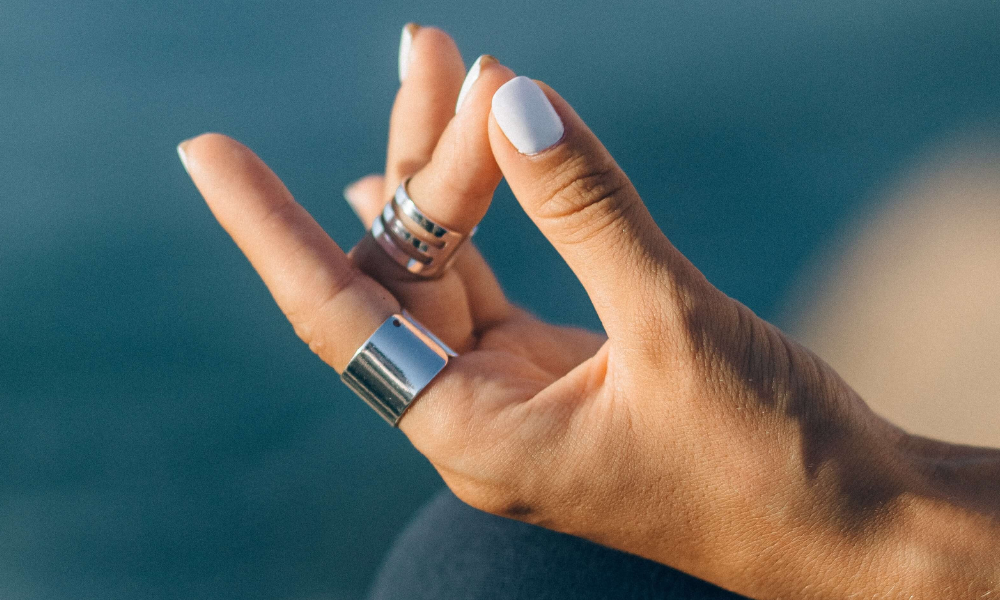
In a gentle yoga session, the focus is on practicing postures (asanas) in a way that is comfortable and supportive for the body rather than pushing it to its limits.
The yoga teacher will pace a gentle class slower than other styles, such as vinyasa, and poses are often modified to accommodate individual needs and abilities.
Gentle yoga combines seated, standing, and reclined postures, breathwork, and meditation.
The goal of the practice is to release tension, improve flexibility, balance, and body awareness, and promote relaxation and overall well-being.
Which styles are classed as Gentle Yoga?
Several gentle yoga styles match the criteria for a gentle yoga class: slow-moving and nourishing. Yin, Restorative, and slow-paced Hatha are the most well-known forms of Gentle Yoga practices.
Yin Yoga
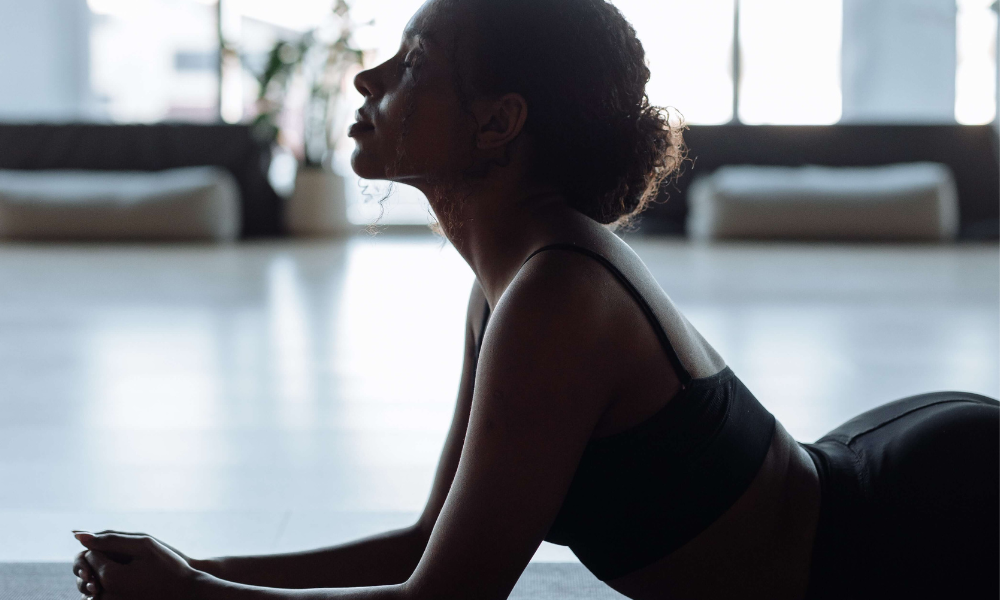
This type of yoga is a slow-paced, meditative yoga class emphasizing long holds of passive postures. The practice works with the meridian lines in the body and involves holding seated or supine poses for extended periods, typically ranging from 3 to 5 minutes.
The focus of yin yoga classes is to achieve a deep stretch of the connective tissues in the body, such as the ligaments, tendons, and fascia, rather than the muscles.
This is achieved through props, such as blocks, blankets, and bolsters, which allow practitioners to relax into the poses and hold them for longer periods.
Restorative yoga
Restorative yoga is another gentle, slow-paced style focused on relaxation and stress relief. The practice involves holding passive postures with the support of props such as blankets, bolsters, and blocks.
The poses are typically held for several minutes, allowing the body to relax and release tension.
The primary goal of restorative yoga is to activate the parasympathetic nervous system, also known as the “rest and digest” response of the physical body. This is achieved by using props to create a comfortable and supportive environment that encourages the body to release tension and stress.
See below for the key differences between Restorative and Yin yoga.
Slow-paced Hatha Yoga
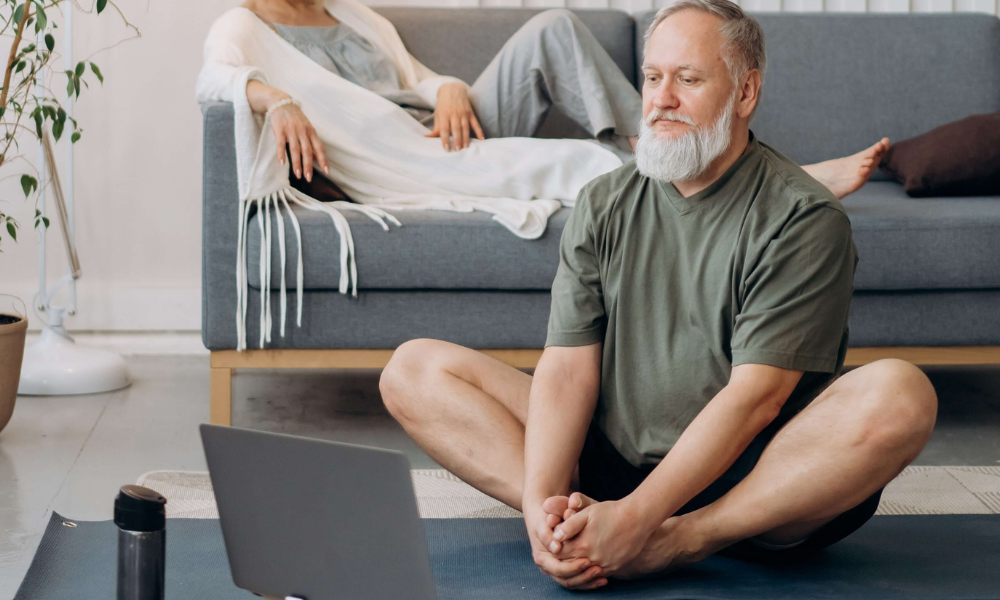
Hatha Yoga is a style that focuses on physical postures (asanas), breathing techniques (pranayama), and meditation. It is one of the oldest and most traditional styles of yoga and is often practiced at a slower pace.
In a slow-paced Hatha Yoga class, the focus is on holding each pose in a gentle yoga sequence for several breaths, allowing students to deepen their awareness of the body and the breath. The class may start with simple breathing exercises and warm-up poses, followed by standing, seated, and supine poses.
The pace of the class is deliberate and slow, emphasizing relaxation, mindfulness, and introspection.
The class often ends with a period of relaxation, such as savasana (corpse pose), where students lie on their backs and allow their bodies to relax and release tension fully. The teacher may also lead a guided meditation or breathing exercise during this time.
Slow-paced Hatha Yoga is an excellent option for people new to yoga or seeking a more gentle, meditative, balanced yoga practice.
Key differences between Yin and Restorative yoga
Yin and Restorative are both classed as Gentle yoga and have many similarities, but there are some key differences between the two practices worth remembering:
Intensity of poses in gentle yoga
Yin yoga poses are more intense and challenging than restorative yoga poses. Yin poses are held for three to five minutes to stretch the body’s connective tissues. In restorative yoga, poses are held for a similar length, focusing on relaxation and stress relief rather than deep stretching.
Use of props in gentle yoga
Both yin and restorative yoga use props such as bolsters, blankets, and blocks to support the body in poses. Still, restorative yoga uses more props and focuses more on creating a supportive and comfy environment so the muscles can fully release.
Physical benefits of gentle yoga
Yin yoga primarily focuses on stretching the body’s connective tissues, while restorative yoga focuses on relaxation and stress relief. As a result, yin yoga is often recommended for improving flexibility and joint health, while restorative yoga is recommended for reducing stress, improving sleep, and promoting overall well-being.
Mental focus
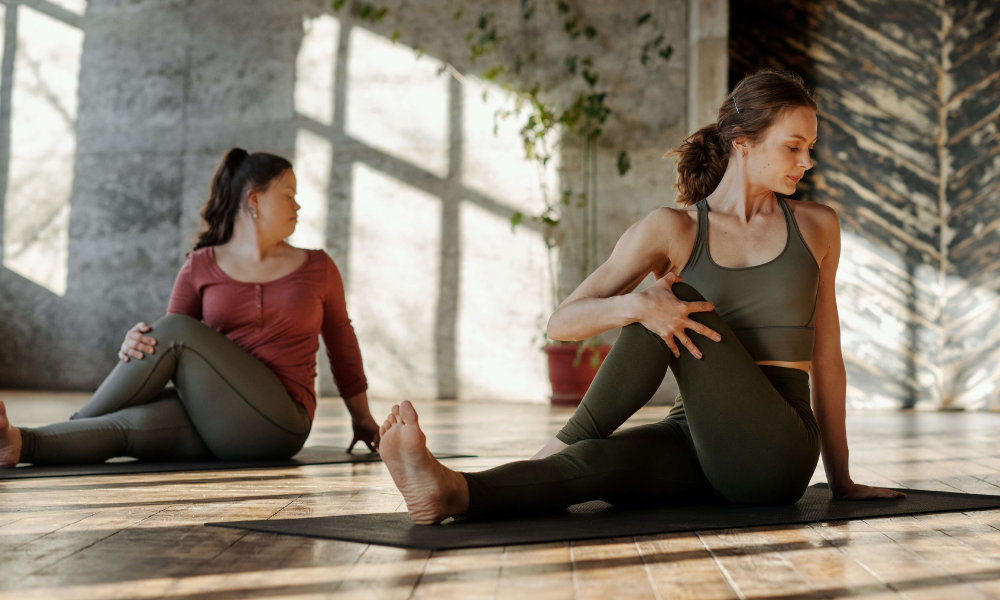
Both yin and restorative yoga are meditative practices, but the mental focus of each practice is slightly different. In Yin, the focus is on staying present and attentive to bodily sensations. In restorative yoga, the focus is on relaxation and letting go of tension and stress.
What are the benefits of a gentle yoga practice?
Practicing yoga of any form can have countless benefits, ranging from physical relief from chronic pain to the emotional release of long-held trauma.
Potential health benefits of practicing gentle yoga regularly include improved mobility and joint health, reduced stress and anxiety, better sleep, and an overall sense of calm and tranquility.
Yoga can also help lower blood pressure, strengthen the immune system, and improve digestion. You can manage chronic pain and other health conditions like arthritis or fibromyalgia by doing gentle yoga daily.
Additionally, gentle yoga promotes self-awareness, mindfulness, and a greater connection to the present moment.
What is the most gentle yoga pose?
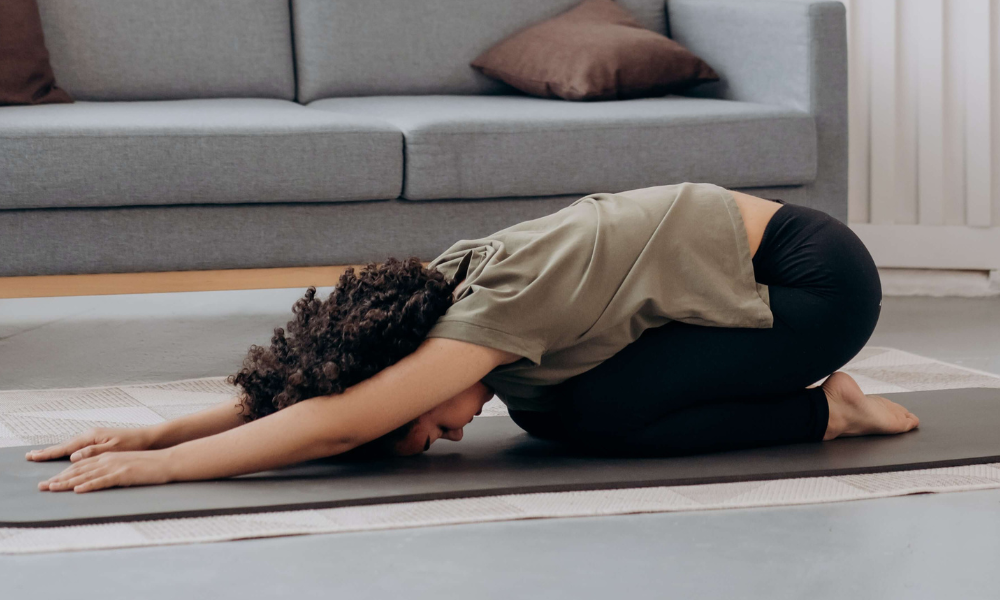
You can practice gentle yoga when you need to slow down. “Balasana,” or Child’s Pose, is one of the most relaxing yoga poses.
To practice Child’s Pose, start on your hands and knees with your hands just in front of your shoulders and your knees hip-width apart. Slowly lower your hips back toward your heels, stretching your arms in front of you. Rest your head on the mat and allow your body to relax into the pose.
Child’s Pose is great for beginners or anyone looking for a gentle stretch. It helps to relieve tension and stress and is often used as a resting pose at the end of a yoga practice.
10 Restorative Gentle Yoga Poses for Renewal
Child’s pose (Balasana)
This pose is good for releasing hip, back, and shoulder tension. First, sit on your heels and stretch your arms forward while lowering your forehead to the ground.
Legs up the wall (Viparita Karani)
This pose helps to relieve stress and tension in the legs and can also assist in calming the mind. Begin by lying on your back with your legs extended straight up, gently pressing them against a wall, and relaxing.
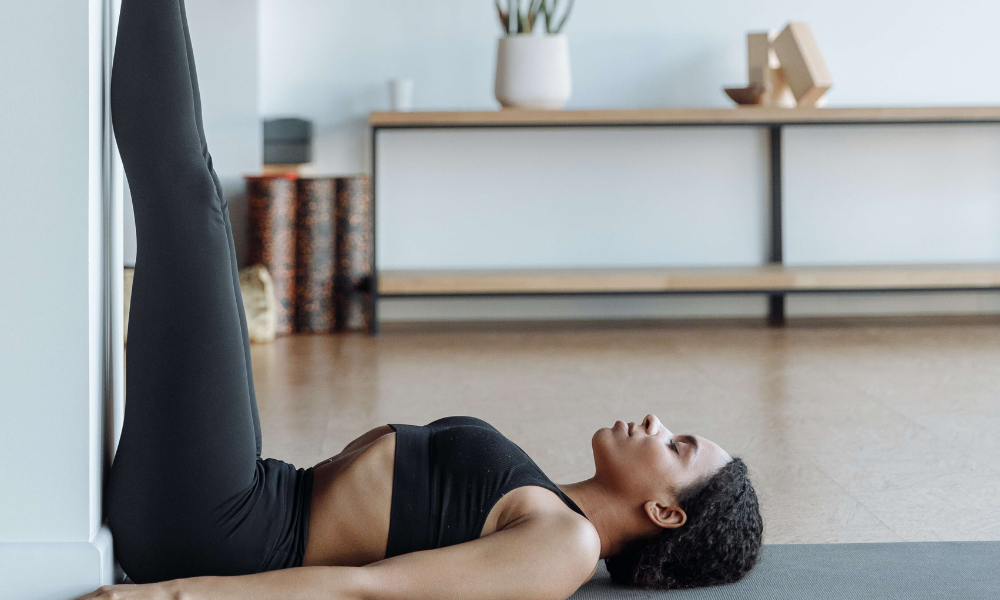
Supported fish pose (Matsyasana)
This pose is a nice chest opener and promotes deep relaxation. Lie on your back with a bolster or pillow under your shoulder blades. Reach your arms out in a t-shape and extend your legs long or knees bent. Relax your upper body as enjoy this heart opener.
Reclining bound angle pose (Supta Baddha Konasana)
Bound angle pose, also known as Butterfly, helps open the hips and inner thighs and can also help relieve tension in the lower back.

To do this pose, lie on your back with the soles of your feet together and your knees apart, creating a diamond shape. Put yoga blocks under each knee for support if the stretch is too intense, and breathe for a few moments to settle into the pose.
Supported bridge pose (Setu Bandha Sarvangasana)
This pose relieves tension in the lower back and hamstrings and can help calm the mind. To begin, lie down on your back with your feet on the ground, hip distance apart.
Raise your hips to the sky and position a yoga block or bolster under your sacrum. Ensure there is no pain and relax.
Seated forward bend (Paschimottanasana)
One of many seated yoga postures, this pose is excellent for releasing hamstrings and lower back tension. To do this pose, sit on the ground with your legs extended, ground your sit bones into the mat, extend your arms to the sky, and slowly fold forward.
If you have tight hamstrings, bend your knees slightly and breathe gently.
Seated Wide-Legged Straddle Pose (Upavistha Konasana)
Sit on the floor with your legs straight out in front of you. After, spread them out as wide as possible, ensuring your knees and toes point straight toward the ceiling.
Then, hinge forward at your hips, bringing your hands to the floor before you. Relax in the pose and feel your hips, hamstrings, and back stretch.
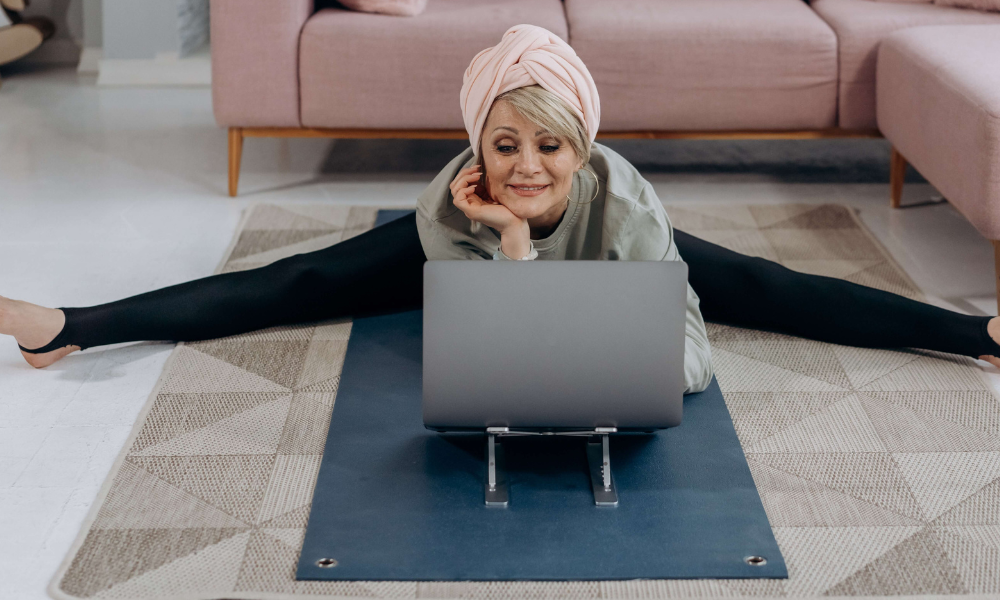
Head to Knee Forward Bend Pose (Janu Sirsasana)
A gentle seated twist, similar to the seated forward fold, begins by sitting with your legs straight. Bend your lift knee and place your right foot on your right thigh.
Hinge forward from your hips and reach your hands to your right foot. Feel the stretch in the left side of your body and into your right leg.
Supine Twist (Supta Matsyendrasana)
Supine Twist, or Supta Matsyendrasana, is a gentle yoga pose that can help stretch the spine, hips, and shoulders. Begin lying on your back with your right arm and left arm extended to the sides in a T-shape.
Bend your knees 90 degrees into a table-top position and slowly lower both legs to one side, keeping the knees stacked on each other. Turn your head in the opposite direction to your legs. Try to keep both shoulders grounded on the mat.
Corpse pose (Savasana)
Savasana’s relaxation pose is great for helping you fully let go of tension and stress. Lie on your back with your arms and legs extended, allowing your whole body to relax completely.
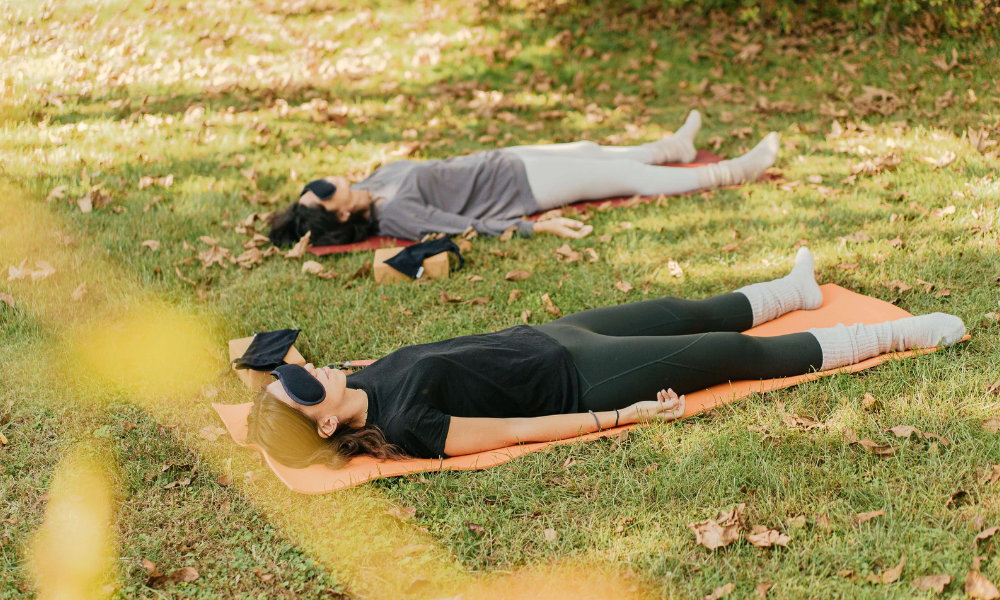
Is Gentle Yoga good for beginners?
A gentle yoga class is a good way for beginners to learn the fundamentals of yoga in a supportive and non-intimidating environment, which can help improve overall fitness, reduce stress and anxiety, and promote better sleep and relaxation.
Athletic yoga styles can seem more appealing to some because they offer intensity. However, gentle yoga can often be beneficial with the typical stressors of everyday life.
Gentle Yoga classes typically include various poses adapted to suit the needs of individual students. The transitions between poses are slower, allowing students to focus on their breath and their body’s sensations. So, it can help build strength, flexibility, and balance over time while promoting a sense of calm and relaxation.
It is also suitable for recovering from injury or physical limitations, making it a great place to start. Chair yoga is a form of gentle yoga popular among older people or those with limited physical capabilities.

Conclusion
In conclusion, gentle yoga is a form of yoga that is accessible to people of all ages and fitness levels. Its emphasis on slow, controlled movements, deep breathing, and relaxation makes it an ideal practice for those with physical limitations, injuries, or chronic health conditions.
The benefits of gentle yoga include improved flexibility, balance, strength, and overall well-being. It reduces stress, anxiety, and depression and can positively impact heart health and immune function.
Whether you are a seasoned and confident yogi or just beginning your wellness journey, gentle yoga can provide a safe and effective way to promote physical and mental health.




